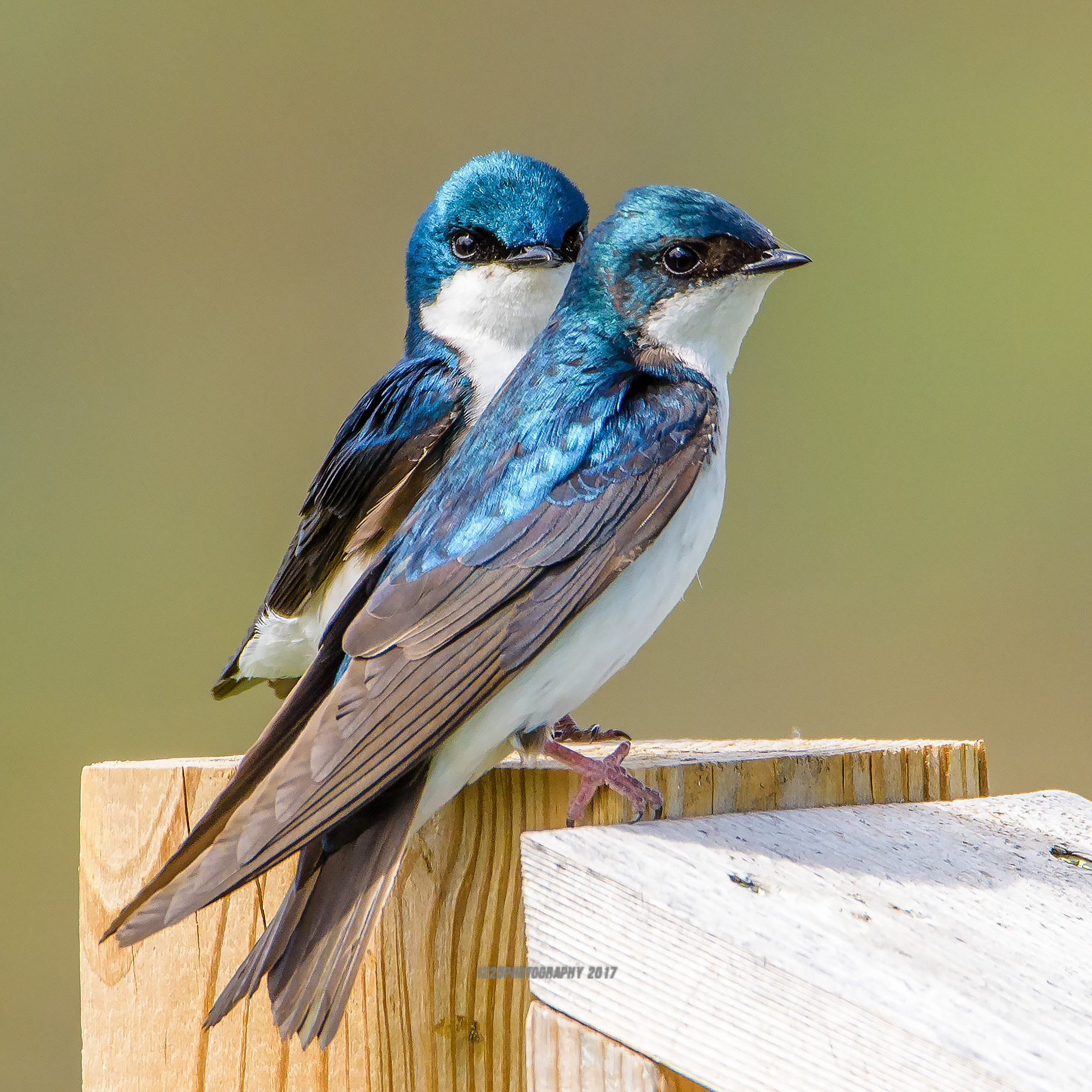
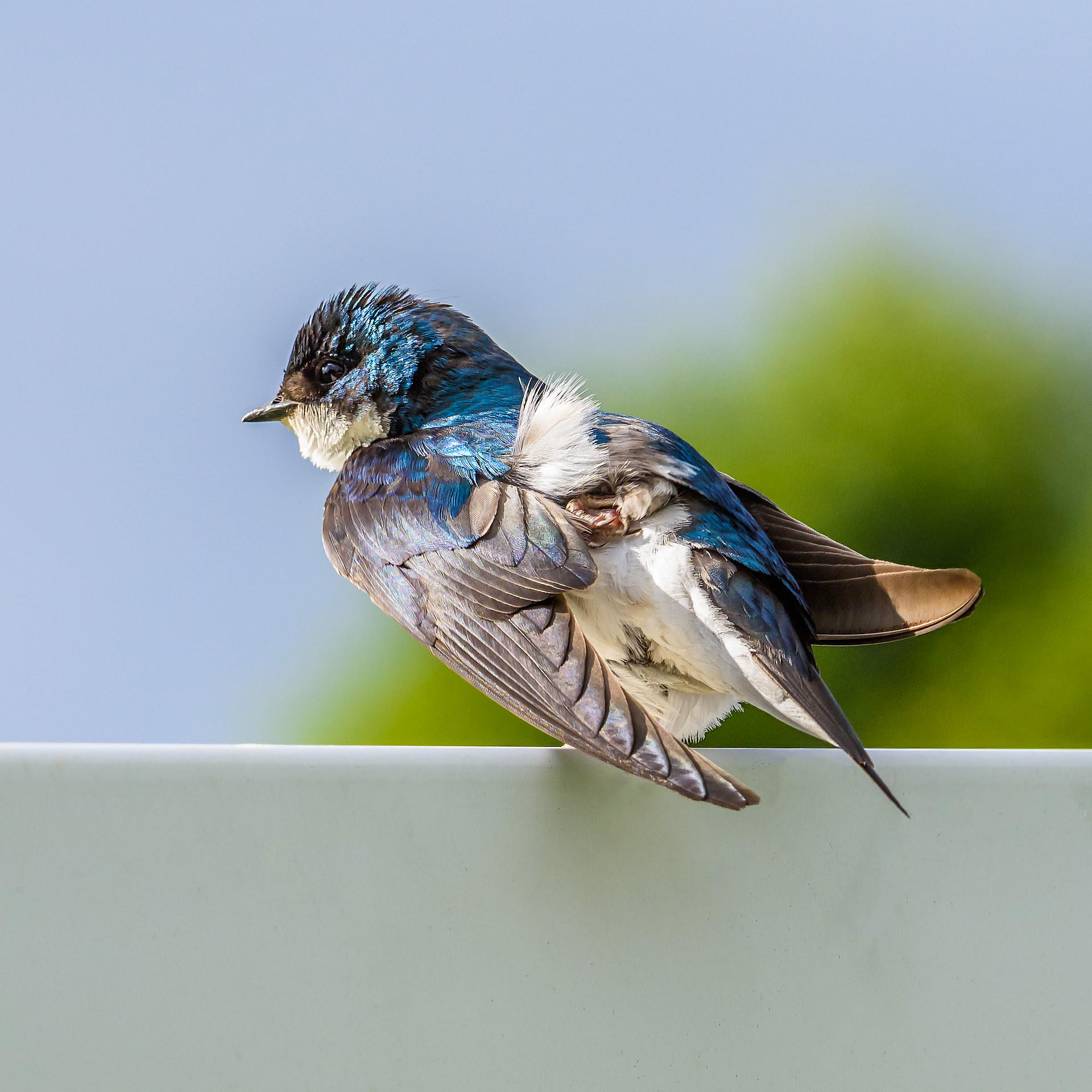
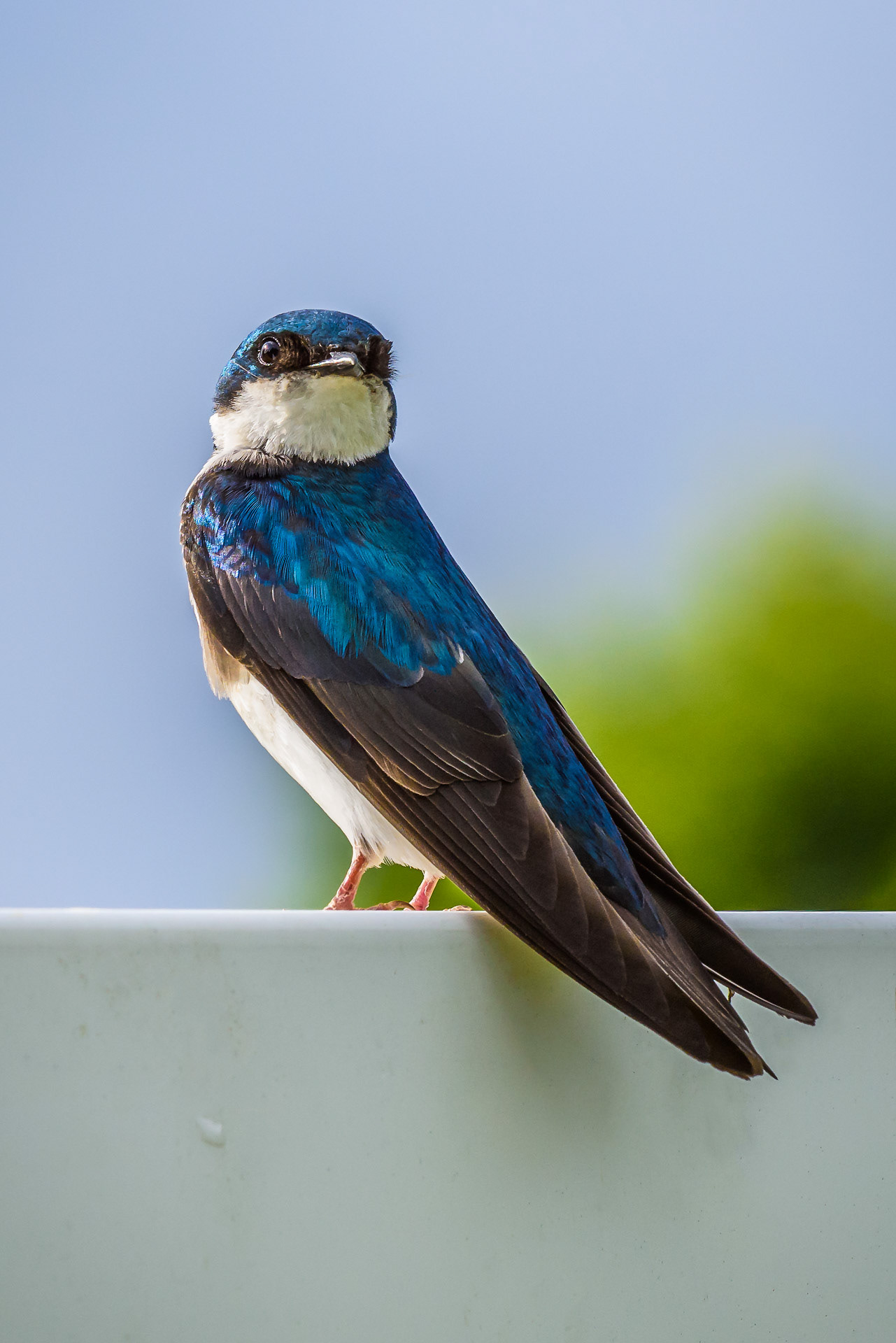
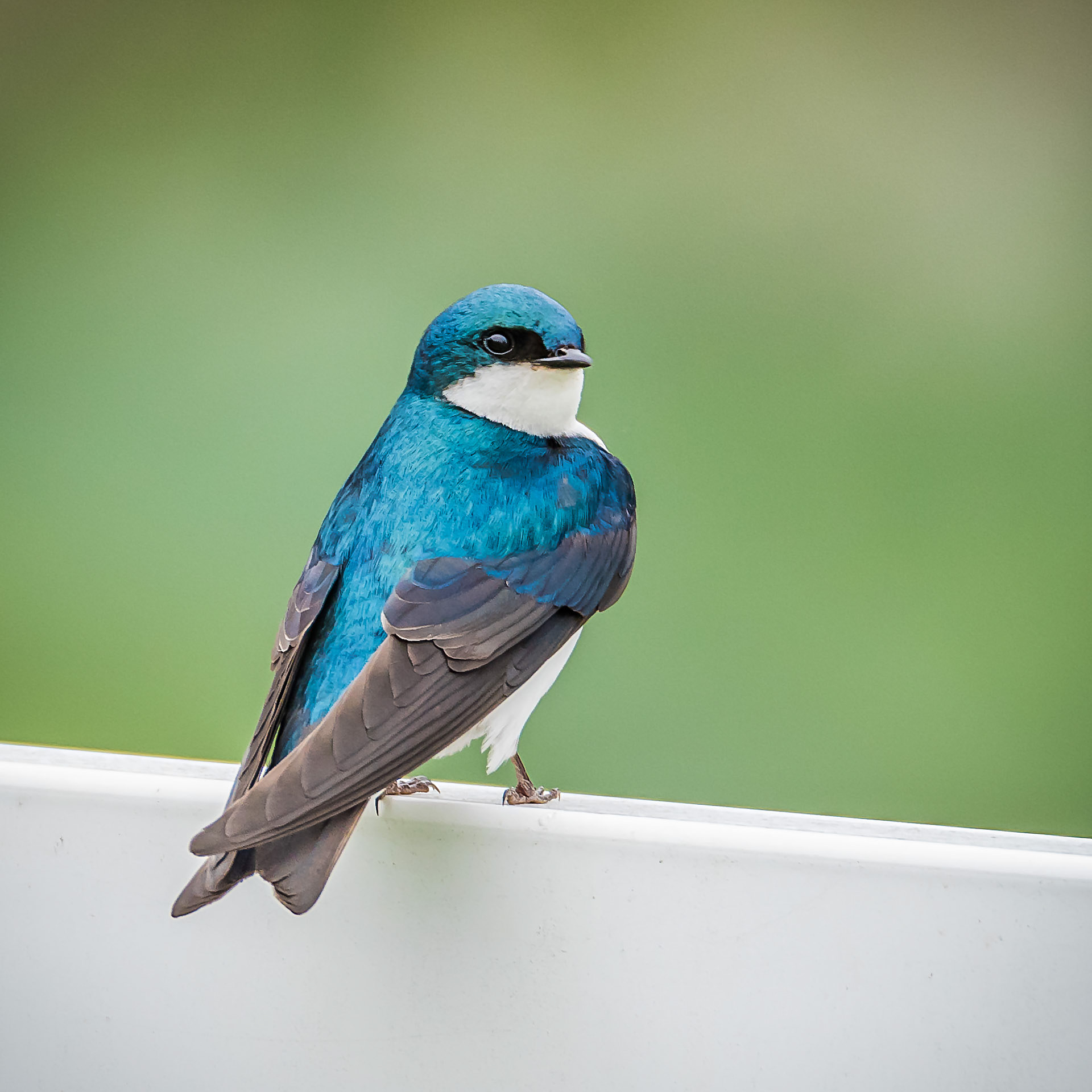
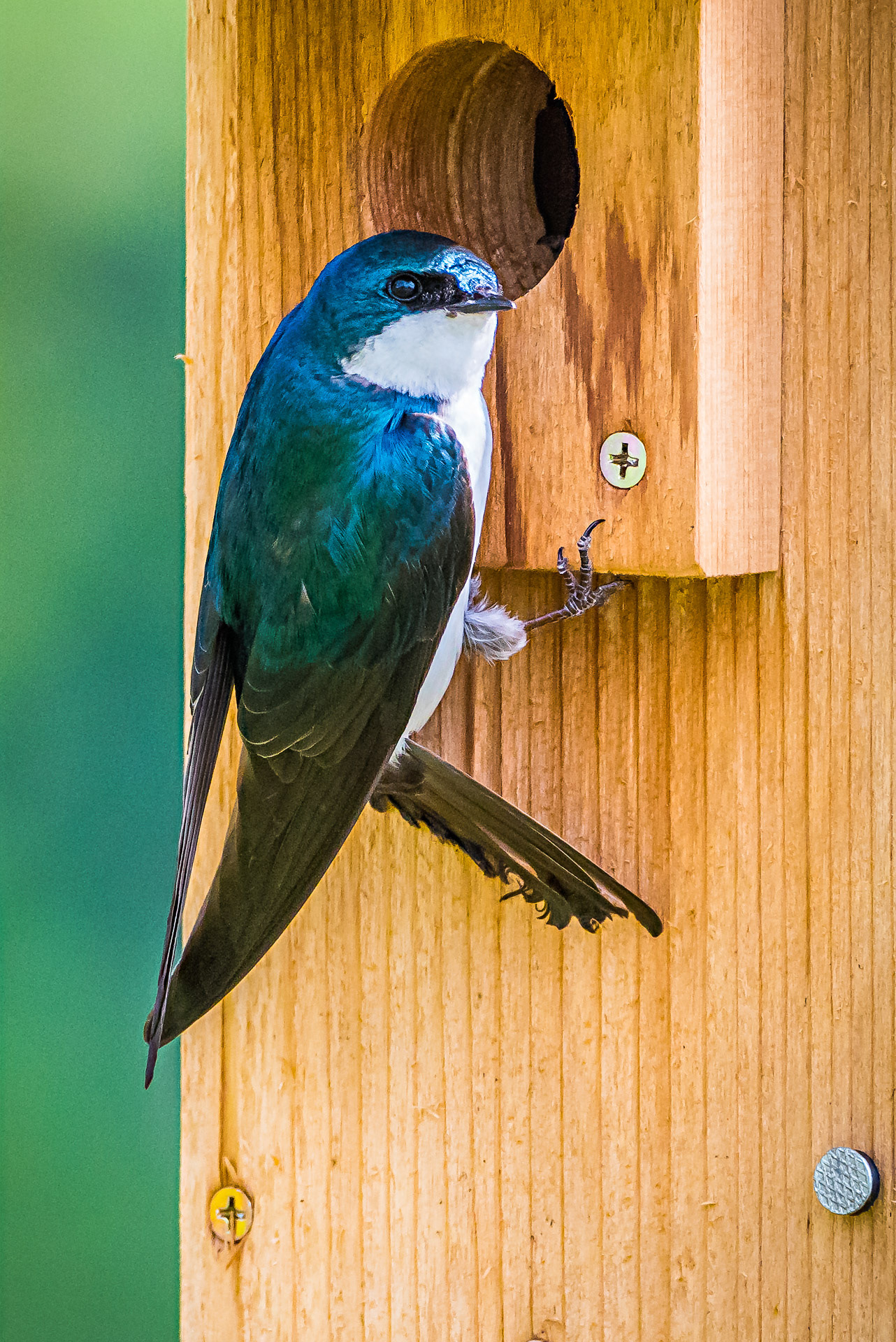
Handsome aerialists with deep-blue iridescent backs and clean white fronts, Tree Swallows are a familiar sight in summer fields and wetlands across northern North America. They chase after flying insects with acrobatic twists and turns, their steely blue-green feathers flashing in the sunlight. Tree Swallows nest in tree cavities; they also readily take up residence in nest boxes. This habit has allowed scientists to study their breeding biology in detail, and makes them a great addition to many a homeowner’s yard or field. The above description is provided from: www.allaboutbirds.org




